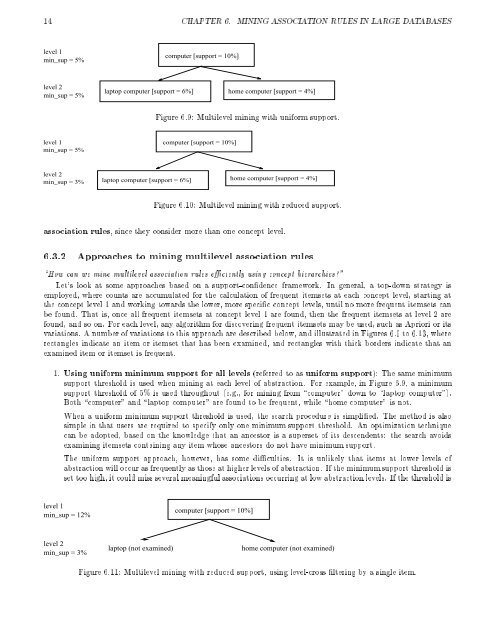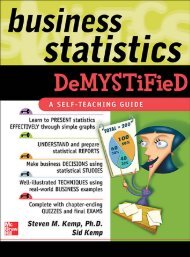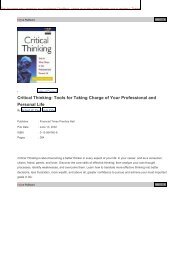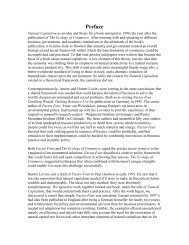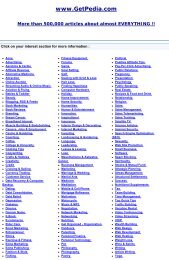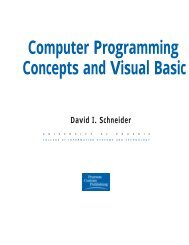Chapter 06 - Changing Education Paradigm
Chapter 06 - Changing Education Paradigm
Chapter 06 - Changing Education Paradigm
Create successful ePaper yourself
Turn your PDF publications into a flip-book with our unique Google optimized e-Paper software.
14 CHAPTER 6. MINING ASSOCIATION RULES IN LARGE DATABASES<br />
level 1<br />
min_sup = 5%<br />
level 2<br />
min_sup = 5%<br />
level 1<br />
min_sup = 5%<br />
level 2<br />
min_sup = 3%<br />
laptop computer [support = 6%]<br />
laptop computer [support = 6%]<br />
computer [support = 10%]<br />
home computer [support = 4%]<br />
Figure 6.9: Multilevel mining with uniform support.<br />
computer [support = 10%]<br />
home computer [support = 4%]<br />
Figure 6.10: Multilevel mining with reduced support.<br />
association rules, since they consider more than one concept level.<br />
6.3.2 Approaches to mining multilevel association rules<br />
\How can we mine multilevel association rules e ciently using concept hierarchies?"<br />
Let's look at some approaches based on a support-con dence framework. In general, a top-down strategy is<br />
employed, where counts are accumulated for the calculation of frequent itemsets at each concept level, starting at<br />
the concept level 1 and working towards the lower, more speci c concept levels, until no more frequent itemsets can<br />
be found. That is, once all frequent itemsets at concept level 1 are found, then the frequent itemsets at level 2 are<br />
found, and so on. For each level, any algorithm for discovering frequent itemsets may be used, such as Apriori or its<br />
variations. A numberofvariations to this approach are described below, and illustrated in Figures 6.9 to 6.13, where<br />
rectangles indicate an item or itemset that has been examined, and rectangles with thick borders indicate that an<br />
examined item or itemset is frequent.<br />
1. Using uniform minimum support for all levels (referred to as uniform support): The same minimum<br />
support threshold is used when mining at each level of abstraction. For example, in Figure 6.9, a minimum<br />
support threshold of 5% is used throughout (e.g., for mining from \computer" down to \laptop computer").<br />
Both \computer" and \laptop computer" are found to be frequent, while \home computer" is not.<br />
When a uniform minimum support threshold is used, the search procedure is simpli ed. The method is also<br />
simple in that users are required to specify only one minimum support threshold. An optimization technique<br />
can be adopted, based on the knowledge that an ancestor is a superset of its descendents: the search avoids<br />
examining itemsets containing any item whose ancestors do not have minimum support.<br />
The uniform support approach, however, has some di culties. It is unlikely that items at lower levels of<br />
abstraction will occur as frequently as those at higher levels of abstraction. If the minimum support threshold is<br />
set too high, it could miss several meaningful associations occurring at low abstraction levels. If the threshold is<br />
level 1<br />
min_sup = 12%<br />
level 2<br />
min_sup = 3%<br />
laptop (not examined)<br />
computer [support = 10%]<br />
home computer (not examined)<br />
Figure 6.11: Multilevel mining with reduced support, using level-cross ltering by a single item.


